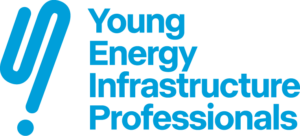

https://www.dailyoilbulletin.com/article/2020/9/16/new-energy-future-avatar-team-recommends-blending-/
Hydrogen provides an opportunity for energy companies to innovate, diversify and attract new investments, and blending hydrogen gas into existing pipelines would let producers quickly access lucrative West Coast and overseas markets.
According to the team of young professionals pitching this idea to industry leaders as part of the Avatar Program, investing in hydrogen also allows Alberta and Ottawa to be in sync regarding energy development and environmental policy.
There are three different types of hydrogen: grey, blue and green.
Grey hydrogen is produced using fossil fuels such as natural gas, which emit CO2 into the air as they combust. Blue hydrogen is made the same way, but carbon capture, utilization and storage (CCUS) helps make it cleaner. As its name suggests, green hydrogen is the cleanest variety and is produced when renewable energy is used in the electrolysis process that removes the hydrogen.
“Federal policy and financial support will open the door to build up the hydrogen industry within Canada,” said team member Lindsay Drozdiak, a mechanical design engineer. “We must act now on the export opportunities that lay in regions such as Japan, Korea, China and California, who’ve already developed aggressive hydrogen targets for 2030 and 2050. We need to play a role in fulfilling that demand.”
She added: “By utilizing existing infrastructure, we need to act quickly and jump on this export opportunity while paving the path forward for Canada’s domestic hydrogen economy.”
Canada produces hydrogen through steam methane reforming (SMR) via petrochemical refining within Alberta’s Industrial Heartland, with the Alberta Carbon Trunk Line (ACTL) available for CO2 disposal.
Blending that hydrogen into the Coastal GasLink pipeline would enable producers to access B.C.’s coast at Kitimat — a single distribution point for H2 that is provincially regulated and approved, with the possibility of increased capacity.
The Coastal GasLink pipeline is an approximately 670 kilometre pipeline from the Dawson Creek area of B.C. to the West Coast. Currently under construction, the line will transport natural gas to the approved LNG Canada project near Kitimat.
“Using a 15-per-cent blend ratio, there are no major infrastructure upgrades that are needed for the pipeline,” said Mark Fukuda, account manager at Spartan Control Ltd. He noted that ATCO Ltd. has already proven this ratio in an existing pilot. “Phase 1 of the Coastal GasLink can supply 21 per cent of the anticipated 2030 incremental market demand, while Phase 2 construction can increase this to 60 per cent, all with just a 15-per-cent blend in the pipeline.”
Once at Kitimat, the team says, hydrogen should be separated from the blend using a membrane process that is simple, energy efficient, and costs less than other available options.
“Hydrogen separation using membranes requires less than 50 per cent of the energy required from other methods, and carbon membranes require less energy compared to polymer membranes,” said John Martínez, an engineer with degrees from the National University of Colombia and University of Calgary. “Another advantage is that they can separate hydrogen from streams with as low as five per cent H2.”
Available markets
Canadian-produced blue hydrogen has a nearby available market in California, with the state targeting one million fuel-cell vehicles by 2030, said Kaylyn Tenove, a system design engineer at Enbridge Inc. Also, she added, shipping hydrogen to Kitimat provides a domestic market as B.C. drives policies to stimulate demand. There is also Asia.
“Japan leads the way in Asia, with targets to have 62 million fuel-cell vehicles and 53 million households powered by hydrogen in 2050,” she told a panel of industry leaders during last month’s final Avatar event. “By 2050, hydrogen demand in California and Japan, South Korea and China is anticipated to reach 100 million tonnes per year. Just a five-per-cent share of these markets could be worth $15 billion annually.”
While Australia is well positioned for these markets, noted Tenove, that country is unable to meet all the demand in Asia and California, and Canadian hydrogen can compete with Australia, even with liquefaction and shipping costs.
“Plus, it’s anticipated our production costs become lower as we start to see the economies of scale when hydrogen starts to grow. If we can provide a security of supply and Canadian hydrogen to these markets before our competitors, then there’s the potential for a major export opportunity.”
West Coast access to these leading markets puts Canada in a good position to export blue hydrogen.
Souvik Neogi, a professional engineer with more than 12 years of experience, noted that the distance from B.C. to Japan is the same as from Australia to Japan. “If we can get into Japan, it would be a really big advantage for us.”
Peace Region advantage
Construction of SMR facilities in the Peace Region coupled with CCUS offers potential to deploy large-scale hydrogen production that can expand Canada’s hydrogen sector and meet increasing market demand domestically and abroad, according to Thomas Xi, a data scientist at Enbridge. “The future of hydrogen is a great opportunity for Canada.”
British Columbia has abundant natural gas reserves to produce hydrogen, geologic potential from its depleted gas reservoirs and saline aquifers enabling roughly 3,000 megatonnes of CO2 storage per year, market proximity, access to hydrogen production technologies, world-class academic institutions supporting the clean-tech sector, and a provincial government willing to help fund private-sector development of necessary infrastructure in the Peace Region, he added.
“All of these competitive advantages make the Peace Region ideal for acceleration of the hydrogen economy in Canada. The maximum hydrogen production through SMR and CCS in Peace Region can be estimated at 1.1 million tonnes per year, which can be expected [to fulfil] 9.79 per cent of market demand by 2030.”